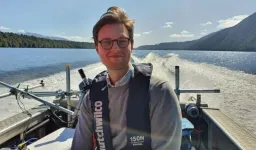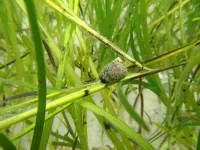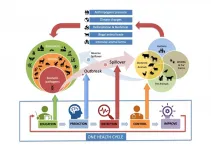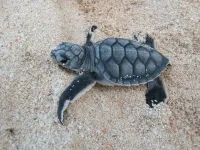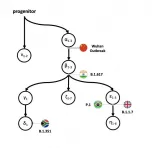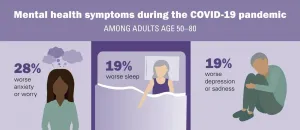(Press-News.org) Artificial intelligence that enhances remote monitoring of water bodies - highlighting quality shifts due to climate change or pollution - has been developed by researchers at the University of Stirling.
A new algorithm - known as the 'meta-learning' method - analyses data directly from satellite sensors, making it easier for coastal zone, environmental and industry managers to monitor issues such as harmful algal blooms (HABs) and possible toxicity in shellfish and finfish.
Environmental protection agencies and industry bodies currently monitor the 'trophic state' of water - its biological productivity - as an indicator of ecosystem health. Large clusters of microscopic algae, or phytoplankton, is called eutrophication and can turn into HABs, an indicator of pollution and which pose risk to human and animal health.
HABs are estimated to cost the Scottish shellfish industry £1.4 million per year, and a single HAB event in Norway killed eight million salmon in 2019, with a direct value of over £74 million.
Lead author Mortimer Werther, a PhD Researcher in Biological and Environmental Sciences at Stirling's Faculty of Natural Sciences, said: "Currently, satellite-mounted sensors, such as the Ocean and Land Instrument (OLCI), measure phytoplankton concentrations using an optical pigment called chlorophyll-a. However, retrieving chlorophyll-a across the diverse nature of global waters is methodologically challenging.
"We have developed a method that bypasses the chlorophyll-a retrieval and enables us to estimate water health status directly from the signal measured at the remote sensor."
Eutrophication and hypereutrophication is often caused by excessive nutrient input, for example from agricultural practices, waste discharge, or food and energy production. In impacted waters, HABs are common, and cyanobacteria may produce cyanotoxins which affect human and animal health. In many locations, these blooms are of concern to the finfish and shellfish aquaculture industries.
Mr Werther said: "To understand the impact of climate change on freshwater aquatic environments such as lakes, many of which serve as drinking water resources, it is essential that we monitor and assess key environmental indicators, such as trophic status, on a global scale with high spatial and temporal frequency.
"This research, funded by the European Union's Horizon 2020 programme, is the first demonstration that trophic status of complex inland and nearshore waters can be learnt directly by machine learning algorithms from OLCI reflectance measurements. Our algorithm can produce estimates for all trophic states on imagery acquired by OLCI over global water bodies.
"Our method outperforms a comparable state-of-the-art approach by 5-12% on average across the entire spectrum of trophic states, as it also eliminates the need to choose the right algorithm for water observation. It estimates trophic status with over 90% accuracy for highly affected eutrophic and hypereutrophic waters."
INFORMATION:
The collaborative study was carried out with five external partners from research and industry: Dr. Stefan G.H. Simis from Plymouth Marine Laboratory; Harald Krawczyk from the German Aerospace Center; Dr. Daniel Odermatt from the Swiss Federal Institute of Aquatic Science and Technology; Kerstin Stelzer from Brockmann Consult and Oberon Berlage from Appjection (Amsterdam).
Mangroves and seagrasses grow in many places along the coasts of the world, and these 'blue forests' constitute an important environment for a large number of animals. Here, juvenile fish can hide until they are big enough to take care of themselves; crabs and mussels live on the bottom; and birds come to feed on the plants.
However, the plant-covered coastal zones do not only attract animals but also microplastics, a new study shows.
- The denser the vegetation, the more plastic is captured, says Professor and expert in coastal ecology, Marianne Holmer, from the University of Southern Denmark.
She is concerned about how the accumulated microplastics affect animal and plant life.
- We know from other ...
The EU-funded BIO-CRIME project - with support from the Leibniz Institute for Zoo and Wildlife Research (Leibniz-IZW) - conducted a scientific investigation on the topic of illegal small animal trade and the associated risk of pathogen transmission.
The study focused on the key areas of "illegal small animal trade" and the level of knowledge and proper behaviours of young people and adolescents with "zoonotic diseases" and the "One Health concept". One Health is an approach that recognises that human health is closely linked to the health of animals and our shared ...
In 2019 the climate movement experienced an unprecedented growth in its mobilization capacity and its political and media impact. The success of the movement is closely linked to the figure of Greta Thunberg and the global impact of her discourse and the "Fridays for Future" movement in hundreds of cities around the world.
A study by Silvia Díaz-Pérez, Roger Soler-i-Martí and Mariona Ferrer-Fons, members of the UPF JOVIS research group of the Department of Communication, analyses the activist's speeches and messages on social networks and their legitimization through her personal story, and it also looks into the "Fridays for Future" movement in Barcelona, based on Twitter and Instagram posts. The research was based on a project that has received funding from ...
Cryptocurrencies like Bitcoin are becoming increasingly popular. At first glance, they have many advantages: Transactions are usually anonymous, fast and inexpensive. But sometimes there are problems with them. In certain situations, fraud is possible, users can discover information about other users that should be kept secret, and sometimes delays occur.
The research unit "Security and Privacy" at TU Wien (Lukas Aumayr and his supervisor Prof. Matteo Maffei) in collaboration with the IMDEA Software Institute (Prof. Pedro Moreno-Sanchez, previously postdoc at TU Wien) and the Purdue University (Prof. Aniket Kate) analyzed these problems and developed an improved protocol. It has now been published and will be presented this year at ...
Sea turtles in the Cayman Islands are recovering from the brink of local extinction, new research shows.
Monitoring from 1998-2019 shows loggerhead and green turtle nest numbers increased dramatically, though hawksbill turtle nest numbers remain low.
In the first counts in 1998-99, just 39 sea turtle nests were found in total on the three islands. By 2019, the figure was 675.
Captive breeding of green turtles and inactivity of a traditional turtle fishery due to tightening of restrictions in 2008 contributed to this - but populations remain far below historical levels and still face threats including ...
In the field of molecular epidemiology, the worldwide scientific community has been steadily sleuthing to solve the riddle of the early history of SARS-CoV-2. Despite recent efforts by the World Health Organization, no one to date has identified the first case of human transmission, or "patient zero" in the COVID-19 pandemic.
Finding the earliest possible case is needed to better understand how the virus may have jumped from its animal host first to infect humans as well as the history of how the SARS-CoV-2 viral genome has mutated over time and spread globally.
Since the first SARS-CoV-2 virus infection was detected in December 2019, well over a million genomes of SARS-CoV-2 have been sequenced worldwide, ...
May 04, 2021 - In its latest clinical practice guideline on community-acquired pneumonia the American Thoracic Society's guidelines panel addresses the use of nucleic acid-based testing for non-influenza viral pathogens. The guideline was published online in the May 1 issue of the American Journal of Respiratory and Critical Care Medicine. An explainer video may be viewed here.
Community-acquired pneumonia is caused by a wide range of respiratory pathogens, prominently including viruses. However, the only viral pathogen addressed by the 2019 clinical practice guideline was influenza. The panel determined that, given the increasing recognition of non-influenza viral causes ...
DAVIS, CA, May 4, 2021 - In a randomized, controlled study* published online in the journal, Nutrients, researchers found that including mixed tree nuts in a weight management program resulted in significant weight loss and improved satiety.
Researchers at UCLA compared 95 overweight/obese men and women (BMI 27.0-35.0 kg/m2) ages 30-68 years who consumed either 1.5 ounces of mixed tree nuts or a pretzel snack. Both snacks provided the same number of calories, as part of a hypocaloric weight loss diet (500 calories less than resting metabolic rate) over 12 weeks. This was followed by an isocaloric weight maintenance program for an additional ...
Cancer of the colon and rectum is one of the deadliest forms of cancer, and has in recent years affected growing numbers of young people. In the largest registry study to date, researchers at Karolinska Institutet in Sweden and Harvard University in the USA demonstrate a possible connection between colorectal polyps in close relatives and the risk of developing colorectal cancer. The study, which is published in the British Medical Journal, is of potential consequence for different countries' screening procedures.
Colorectal cancer is the second deadliest form of cancer in the world, according to the World Health ...
Nearly one in five older adults say their mental health has gotten worse since the pandemic began in March 2020, and an equal percentage say their sleep has suffered in that time too. More than one in four say they're more anxious or worried than before the COVID-19 era, according to a new poll of people age 50 to 80.
Women, people in their 50s and early 60s, and older adults who have a college degree or higher were more likely than others to report worse mental health than before the pandemic, according to the END ...
